Explain the Difference Between a Bacterial Chromosome and a Plasmid
Name one similarity and one difference between a bacterial chromosome and a plasmid. Generally plasmids and vectors are.

10 3 Plasmids Are Easily Isolated From Bacterial Cells Biology Libretexts
Type of genomic DNA.

. Transfer of genetic information in the cellular form. However plasmids are sometimes present in archaea and eukaryotic organisms. Smaller than chromosomal DNA.
Coli chromosome but experimentally it might be difficult to see the difference if the plasmid is not identified. Separate from bacterial chromosomes these tiny rubber-band-like loops of DNA exist. Each bacterial cell typically produces many copies of a plasmid in contrast to making only one copy of its own chromosome.
This is achieved by mechanisms that monitor the initiation frequency and adjust this frequency to an average of one replication per plasmid copy and cell cycle. The chromosome contains genes that are essential for survival whereas the plasmid contains genes that are helpful to the bacterium but not essential for survival In the process of reverse transcription often carried out by retroviruses. The Tumour inducing or Ti plasmid is present in the bacterium Agrobacterium tumifaciens.
Found in both prokaryotic and eukaryotic cells. Plasmids can also be used as vectors. The specific origin of replication present will influence the plasmid copy number per cell.
The fact that plasmids are smaller and in greater number than the host chromosome make plasmids easier to isolate in pure form which is why researchers commonly use them for studying DNA in the laboratory. The DNA is located in the nucleoid of the cell and is not associated with protein. Bacterial plasmids are relatively small circular DNA molecules that replicate separate from a bacterial chromosome.
A typical high copy plasmid such as pUC or pBluescript should yield 4-5 µg of DNA per ml of culture. In F strains the F factor exists as a separate circular plasmid but the plasmid carries bacterial genes. Plasmid DNA is typically 3-5 kb depending on insert size.
Frost in Encyclopedia of Microbiology Third Edition 2009 Introduction. Why is the R100 factor so. The DNA of most bacteria is contained in a single circular molecule called the bacterial chromosome.
While eukaryotes have two or more chromosomes prokaryotes such as bacteria possess a single chromosome composed of doublestranded DNA in a loop. Plasmid genes are easier to transfer between bacteria than chromosomal DNA. Cosmids viral vectors and artificial chromosomes are the other types of vectors.
The key difference between genomic and plasmid DNA is that genomic DNA is essential for the survival of organisms including bacteria while plasmid DNA is not essential for the survival of bacteria. Larger than plasmid DNA. Double-stranded DNA Circular small and is different from a chromosomal DNA.
Every living organism has genetic material that controls its. It is widely used now as a cloning vector to deliver desirable genes to the host plant to get transgenic plants. They are small circular some are linear double-stranded DNA molecules mostly that exist in bacterial cells and in some eukaryotes.
Bacterial DNA a circular chromosome plus plasmids. To isolate high yields of plasmid DNA use cultures in late log phase or early stationary phase. A form of extrachromosomal DNA.
The sizes of plasmids range from roughly one to more than 1000 kilobase pairs. For cloning genes or other pieces of DNA in the laboratory a plasmid is first isolated from a bacterial cell and then the foreign DNA is inserted into it. I agree this is a property of the plasmid and not of E.
An F cell will contain the F factor as a circular plasmid separate from the chromosome. The chromosome along with several proteins and RNA molecules forms an irregularly shaped structure called the nucleoid. They are most commonly found as small circular double-stranded DNA molecules in bacteria.
In nature plasmids often carry genes that. Plasmids in bacteria are one of them. The Hfr cell has the F factor integrated into its chromosome.
In Escherichia coli the length of the chromosome when open is many times the length of the cell. The Hfr cell has the F factor integrated into its chromosome. A plasmid is a small extrachromosomal DNA molecule within a cell that is physically separated from chromosomal DNA and can replicate independently.
An F cell will contain the F factor as a circular plasmid separate from the chromosome. The Bacterial Chromosome and Plasmid. Propose a mechanism that allows a virulence plasmid to move between bacterial cells.
Found only in prokaryotes. The main difference between plasmid and vectors is that plasmid is an extra-chromosomal element of mainly bacterial cells whereas vector is a vehicle that carries foreign DNA molecules into another cell. We discussed that only F and R factors encode for the sex pilus allowing these plasmids to be transferred to other bacteria.
Between bacteria and other types of cells there are a number of fascinating differences. Plasmids are extra-chromosomal genetic elements that replicate independently of the host chromosome. Plasmid DNA replication occurs coupled to the cell cycle of the bacterial host in such a way that a fixed concentration of plasmids is maintained in the bacterial population.
In F strains the F factor exists as a separate circular plasmid but the plasmid carries bacterial genes that were originally part of the bacterial chromosome. Bacterial conjugation was first described by Lederberg and Tatum in 1946 as a phenomenon involving the exchange of markers between closely related strains of Escherichia coliThe agent responsible for this process was later found to be a site on the chromosome called the F fertility factor. The main difference between genomic DNA and plasmid DNA isolation is that genomic DNA isolation uses strong lysis including the enzymatic or mechanical breakdown of the cell membranes to release the genomic DNA into the solution while plasmid DNA isolation uses mild alkaline lysis to get plasmid DNA into the solution along with the genomic DNA.

The Process Of Bacterial Chromosome And Plasmid Dna Replication Download Scientific Diagram

Difference Between Plasmid And Chromosome Compare The Difference Between Similar Terms
Plasmids And Co Selection Antibiotic Resistance React
How Does A Plasmid Different From Chromosomal Dna Quora
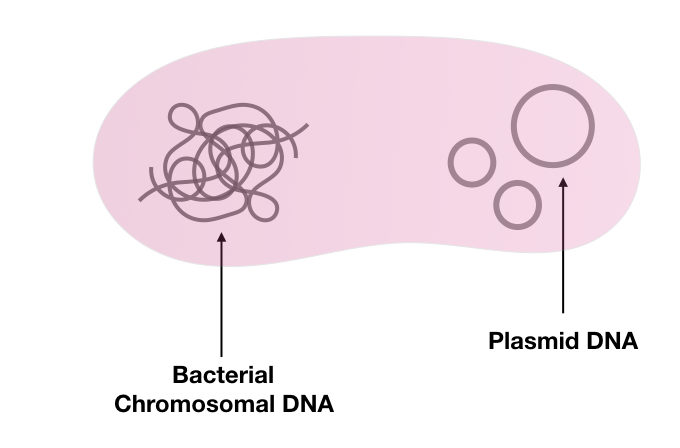
Plasmid Dna Structure Function Isolation And Applications

Solved 1 Name One Similarity And One Difference Between A Chegg Com

Chapter 17 3 Genetic Properties Of Bacteria Flashcards Quizlet

Plasmid An Overview Sciencedirect Topics

Quia Ap Chapter 18 Sections 3 And 4 Bacterial Genetics Basic

Difference Between Plasmid Dna And Chromosomal Dna Compare The Difference Between Similar Terms

Chapter 17 3 Genetic Properties Of Bacteria Flashcards Quizlet

Difference Between Plasmid And Chromosome Compare The Difference Between Similar Terms

Microbial Genetics Flashcards Quizlet
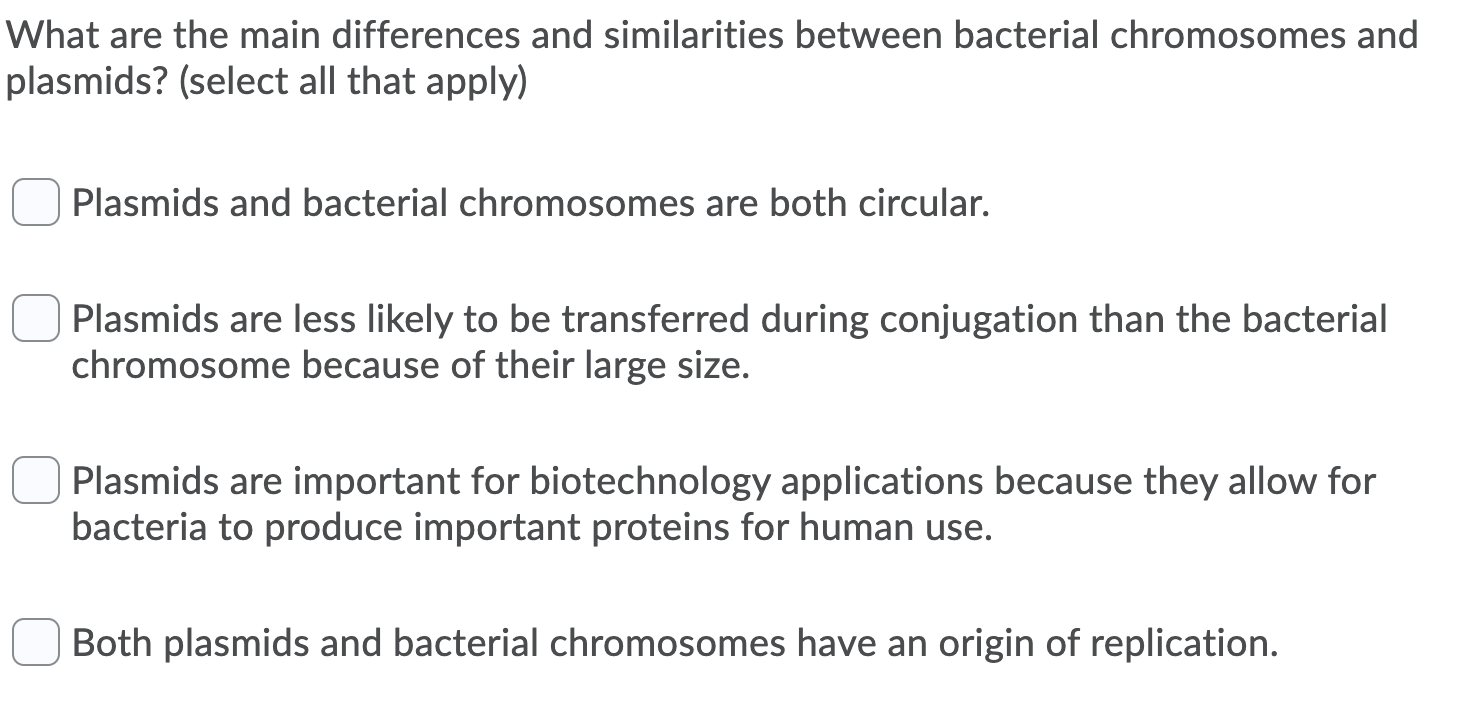
Solved What Are The Main Differences And Similarities Chegg Com
What Is Plasmid What Is Its Application Quora
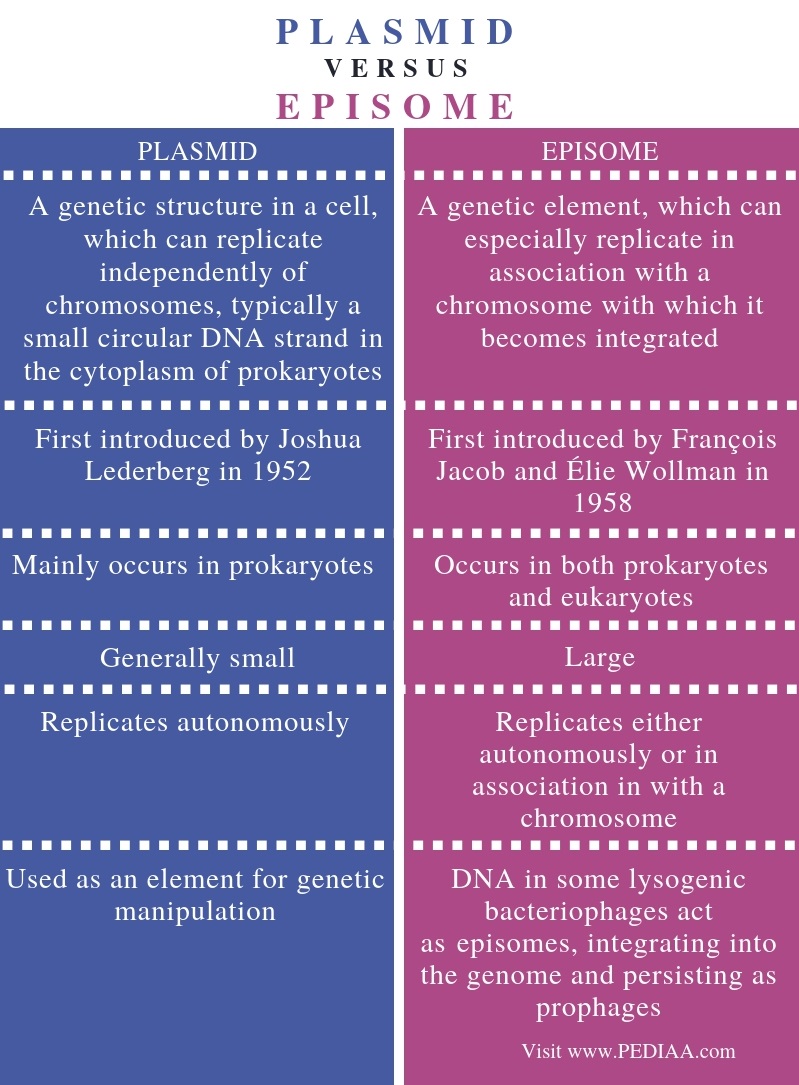
What Is The Difference Between Plasmid And Episome Pediaa Com
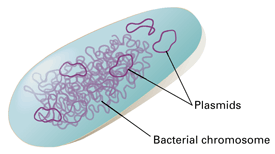
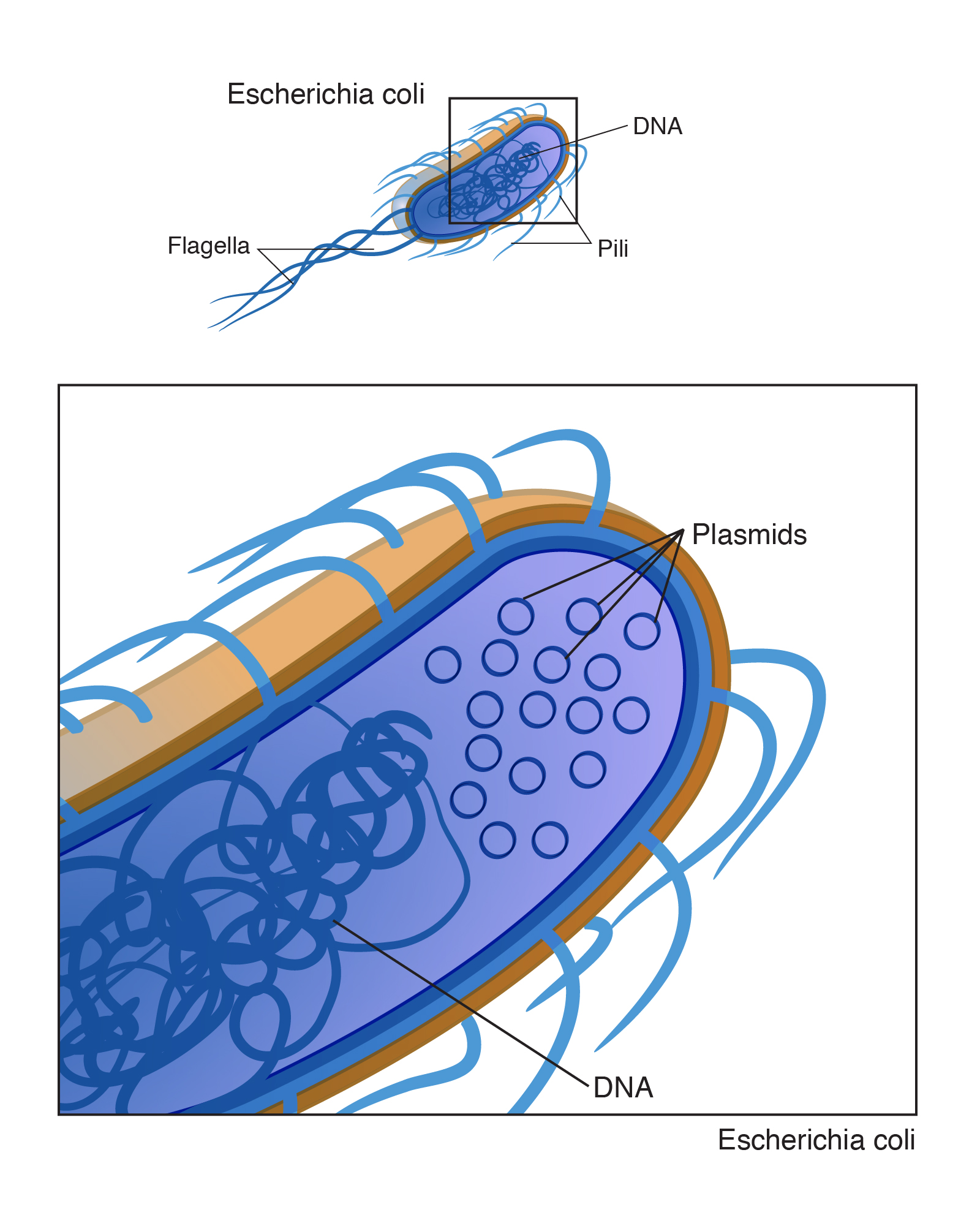

Comments
Post a Comment